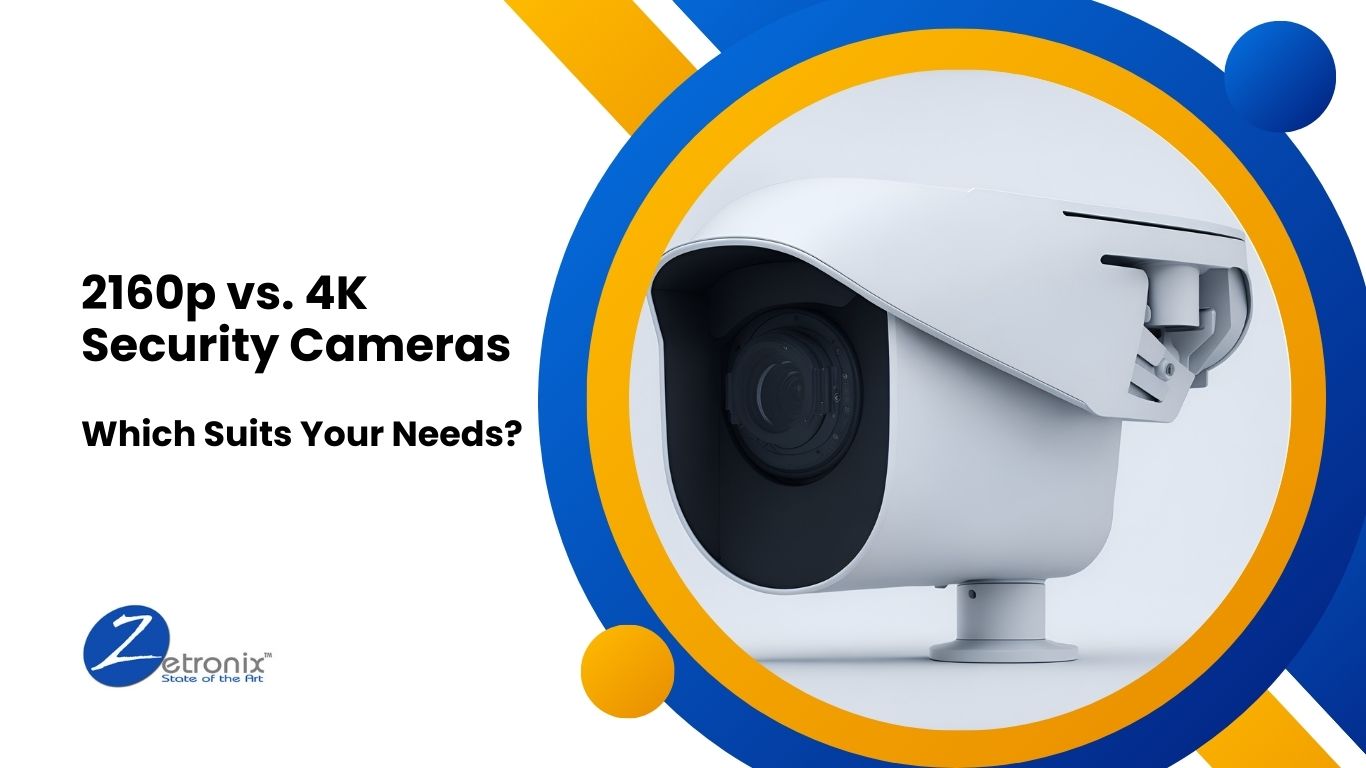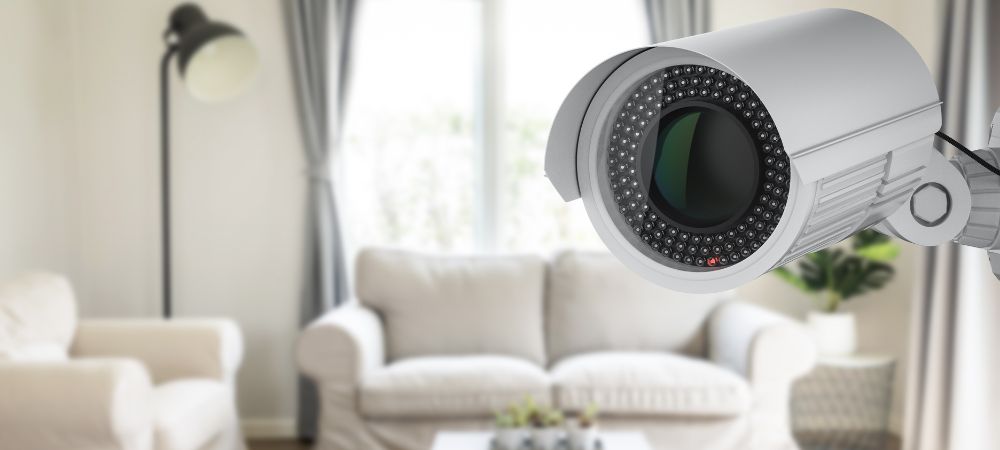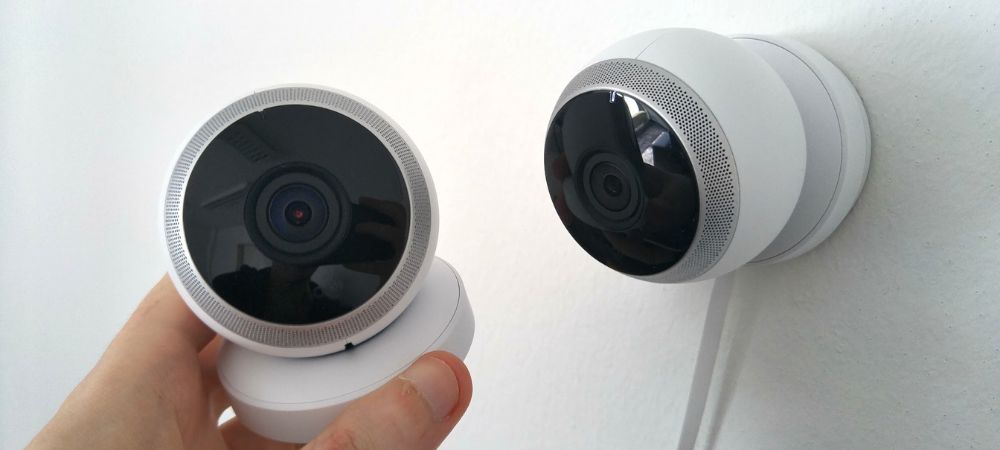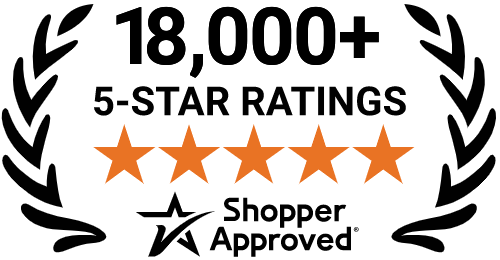2160p Vs. 4k Security Cameras: Which One Is Better for You?

When choosing a security cam, understanding the resolution options available is crucial. Two common resolutions you might encounter are 4K and 2160p. While these terms are often used interchangeably, they have technical distinctions important for consumers. 4K resolution generally refers to a display resolution of approximately 4,000 pixels in width, specifically 4096 x 2160 pixels in the professional video production and cinema context.
On the other hand, 2160p, often branded as UHD or Ultra High Definition, typically refers to a resolution of 3840 x 2160 pixels, commonly used in television and consumer media.
Here is everything you need to know to choose between 2160p Vs 4k security cameras.
Diverse Applications of High-Resolution Security Cameras

High-resolution security cameras like 4K and 2160p are versatile in their applications, ranging from residential safety to sophisticated commercial surveillance systems. These cameras are pivotal in areas where capturing every detail is critical—for instance, in monitoring retail spaces, warehouses, large residential compounds, and high-risk regions.
Detailed Exploration of 4K Cameras from Zetronix
Zetronix offers a range of 4K security cameras, each designed with unique features to cater to different surveillance needs. These cameras incorporate advanced technology to deliver high-quality video footage that ensures detailed images and greater coverage.
Advanced Technology and Features
The 4K cameras provided by Zetronix are distinguished by their high pixel density, which significantly enhances image clarity. This is particularly beneficial for identifying intricate details such as facial features and license plates. Standard features in these cameras include night vision capabilities, a wide dynamic range, and motion detection, all of which enhance the camera's performance across various lighting and movement conditions.
Highlighted Models and Their Special Features
Nano 4K - Ultra HD WIFI Nanny Cam D.I.Y Self-Install Camera Kit with Button Camera Attachments
This model has a high rating of 4.8 out of 5 stars from 12 reviews. It features a 90° viewing angle, perfect for any size room, and is sensitive in low-light conditions. The camera offers a six-hour battery life but can also operate while plugged into the AC. It can store over 28 days of video on a 128GB memory card.
OPIX - 4K Ultra HD Head Mounted WiFi Vlog Camera
Rated the best tool for vlogging and investigations, this camera includes noise and wind-canceling technology and offers a wide 120º angle lens. It has up to five hours of battery life, supports 5G WiFi for live viewing, downloading, and sharing, and includes advanced anti-shake video stabilization.
Orca 4K - UltraHD Video Recording Water Resistant Sport Camera Sunglasses
These sunglasses come with removable ANSI Z87.1 rated lenses and offer a wide 65º angle lens. They are designed to be weather and sweatproof, featuring electronic video stabilization and a vibration alert for start and stop recording.
XZ5 Dual Pro - 4K WiFi Dual Lens Solar Powered Rotating Security Surveillance Camera
With dual lenses offering 120° viewing and 90° panning, this camera provides 360° pan and 180° tilt adjustable from the app. It features AI detection and human tracking, operates in extreme temperatures, and is powered by solar energy, eliminating the need for frequent battery replacements.
TY7 Dual Pro - 4K LTE 4G Dual Lens Solar Powered Rotating Security Surveillance Camera
This dual-lens camera provides 4K UHD color video with audio and operates on 4G networks like AT&T and T-Mobile. It is ideal for remote locations without traditional WiFi access and offers extensive coverage with a 360° pan and 180° tilt capabilities.
Installation and Maintenance

The installation of Zetronix 4K cameras is designed to be straightforward and cater to DIY enthusiasts with user-friendly interfaces. Many models feature wireless connectivity, which minimizes the need for extensive wiring, and durable construction ensures long-lasting performance with minimal maintenance. Regular software updates are provided to enhance security and functionality.
Security and Privacy Considerations
Zetronix takes security and privacy seriously. Their cameras feature robust encryption and comprehensive security measures to protect against unauthorized access to footage. Compliance with local regulations ensures that privacy is maintained, with users having substantial control over their data.
Enhanced Security Features across Different Models
Nano 4K and OPIX cameras: These models feature motion detection alerts sent directly to your smartphone, and local storage ensures that no monthly fees are required.
Orca 4K: Offers built-in memory options and easy sharing capabilities to social media through a free app, promoting both convenience and security.
XZ5 and TY7 Dual Pro: These cameras offer options for local and cloud storage and advanced security features like AI detection and human tracking to enhance surveillance effectiveness.
By combining advanced technological features with easy installation and robust security measures, Zetronix's range of 4K security cameras is well-suited for a variety of applications. They ensure that every detail is captured with clarity and stored securely. Whether for residential safety or sophisticated commercial surveillance, these cameras offer reliable solutions tailored to meet the needs of any scenario.
Technical Specifications and Benefits of 4K Cameras
4K cameras, offering resolutions of up to 4096 x 2160 pixels, are at the forefront of surveillance technology, providing a significantly higher level of detail compared to standard high-definition cameras. This enhanced pixel count is crucial in security settings as it produces sharper and clearer images, making it easier to discern fine details that could be critical in identifying individuals, vehicles, or other important elements in a video feed.
For security purposes, the ability to capture a high level of detail is not merely a feature but a necessity. This is especially true in scenarios where the identification of an individual's facial features or the clear capture of license plates is required. Moreover, the higher resolution allows for digital zooming without substantial loss of picture quality, which means areas of interest within a larger frame can be closely examined for additional details post-recording.
The high resolution of 4K cameras also improves the effectiveness of video analytics, such as motion detection and object recognition, allowing these systems to operate with greater accuracy.
Enhanced image clarity can help reduce false alarms in security systems by distinguishing real threats from non-threatening movements like pets or moving shadows. Additionally, the ability to cover more areas with fewer cameras without sacrificing detail quality makes 4K cameras an economically efficient choice for large-scale surveillance needs, reducing both installation complexity and maintenance costs.
Use Cases of High-Resolution Cameras

The superior imaging capabilities of 4K cameras make them ideal for a variety of demanding surveillance situations. One primary use case is in commercial settings, such as shopping malls, parking lots, and large corporate campuses, where extensive coverage is needed. In these environments, 4K cameras can monitor large areas with sufficient detail, reducing the number of cameras needed compared to lower-resolution systems.
In residential settings, 4K cameras enhance perimeter security and entryway monitoring, providing homeowners with peace of mind through high-quality video evidence in case of theft or vandalism. Similarly, for governmental and critical infrastructure, where security is paramount, the deployment of 4K cameras ensures that all activities are monitored with the highest level of detail possible.
Furthermore, 4K cameras are increasingly used in traffic management and city surveillance. They provide clear images that help in making more accurate decisions in traffic flow management and incident response. The detail captured by these cameras can also be pivotal in forensic investigations, offering clear images that can be critical in identifying persons of interest or reconstructing events.
Comparing 4K and 2160p Cameras: Pros and Cons
Advantages
While both 2160p vs 4k refer to high-definition video resolutions, 4K offers a wider aspect ratio and higher pixel count, which is particularly beneficial in surveillance and security applications. The primary advantage of 4K cameras is their superior image quality. With more pixels, these cameras capture images with finer detail, which can be critical in security situations where clarity is necessary for identifying individuals or specific actions.
The additional resolution provided by 4K also offers greater flexibility in terms of camera placement and field of view. A single 4K camera can effectively monitor a larger area without losing detail, making it a cost-effective solution for expansive areas. This capability not only reduces the number of cameras needed but also simplifies the overall surveillance infrastructure.
Drawbacks
However, the high data rate of 4K video brings challenges. The increased resolution results in larger file sizes, which require more storage capacity and more bandwidth for transmission. This can lead to higher costs for storage solutions and more robust networking infrastructure.
Moreover, to fully leverage the benefits of 4K video, users must ensure that other components of their surveillance system, such as video recorders and monitors, are capable of handling 4K resolution. This often means that existing equipment must be upgraded, which can increase the initial investment significantly.
Lastly, the processing power required to encode and decode 4K video is substantially higher than that required for 2160p video. This necessitates more powerful hardware, which can increase energy consumption and operational costs. Therefore, while 4K cameras offer distinct advantages in terms of image quality and area coverage, they also come with higher infrastructure and maintenance demands.
FAQs:
What is the difference between 4K and 2160p resolutions in security cameras?
While both 4K and 2160p are terms used to describe high-resolution video, 4K typically refers to a resolution of 4096 x 2160 pixels, which is commonly used in professional video production. In contrast, 2160p, also known as UHD or Ultra High Definition, typically has a resolution of 3840 x 2160 pixels and is more commonly used in consumer-grade TVs and monitors. For security cameras, this difference affects the width of the field of view and the level of detail captured.
Are 4K security cameras significantly better than 1080p or 2160p cameras?
Yes, 4K cameras provide a significantly higher resolution than 1080p and slightly higher than 2160p, resulting in clearer and more detailed images. This can be crucial for security purposes where identifying fine details like facial features or license plates is important. However, the benefits need to be weighed against the higher data storage and processing requirements.
Can I use my existing home network to install 4K security cameras?
While 4K cameras can technically be installed on any home network, they typically require more bandwidth to transmit video without lag or buffering. It is important to ensure that your home network, including your router and internet service, can handle the increased data load. Upgrading to a network setup that supports higher data speeds might be necessary to maintain efficient surveillance.
What should I consider before upgrading to a 4K security camera system?
Before upgrading to a 4K security camera system, consider the necessary storage capacity, as 4K videos take up significantly more space than lower-resolution videos. Additionally, ensure that your current hardware, like DVRs or NVRs, supports 4K resolution. Assess whether your network can handle the increased bandwidth requirements and consider the potential need for more powerful processors to handle the data-intensive 4K video feed.
How do I maintain the privacy and security of my 4K security camera footage?
To maintain the privacy and security of your footage, use cameras and storage systems that offer strong encryption and secure access controls. Regularly update your camera’s firmware to protect against vulnerabilities. Additionally, ensure that your cameras are positioned in a way that respects the privacy of neighbors and passersby, adhering to local laws and regulations concerning surveillance and data protection.
Conclusion:
Choosing between a 4K and 2160p security camera depends on your specific needs. For capturing the highest level of detail and managing larger data and hardware requirements, 4K cameras are ideal.
However, 2160p cameras offer excellent resolution and performance for general use at a lower cost and with simpler support needs. Whether for home or commercial use, understanding these distinctions will help you choose the best camera for your surveillance needs.
Ready to upgrade your security? Visit Zetronix to explore our range of 4K and 2160p cameras. Shop now at Zetronix for top-tier surveillance solutions.




